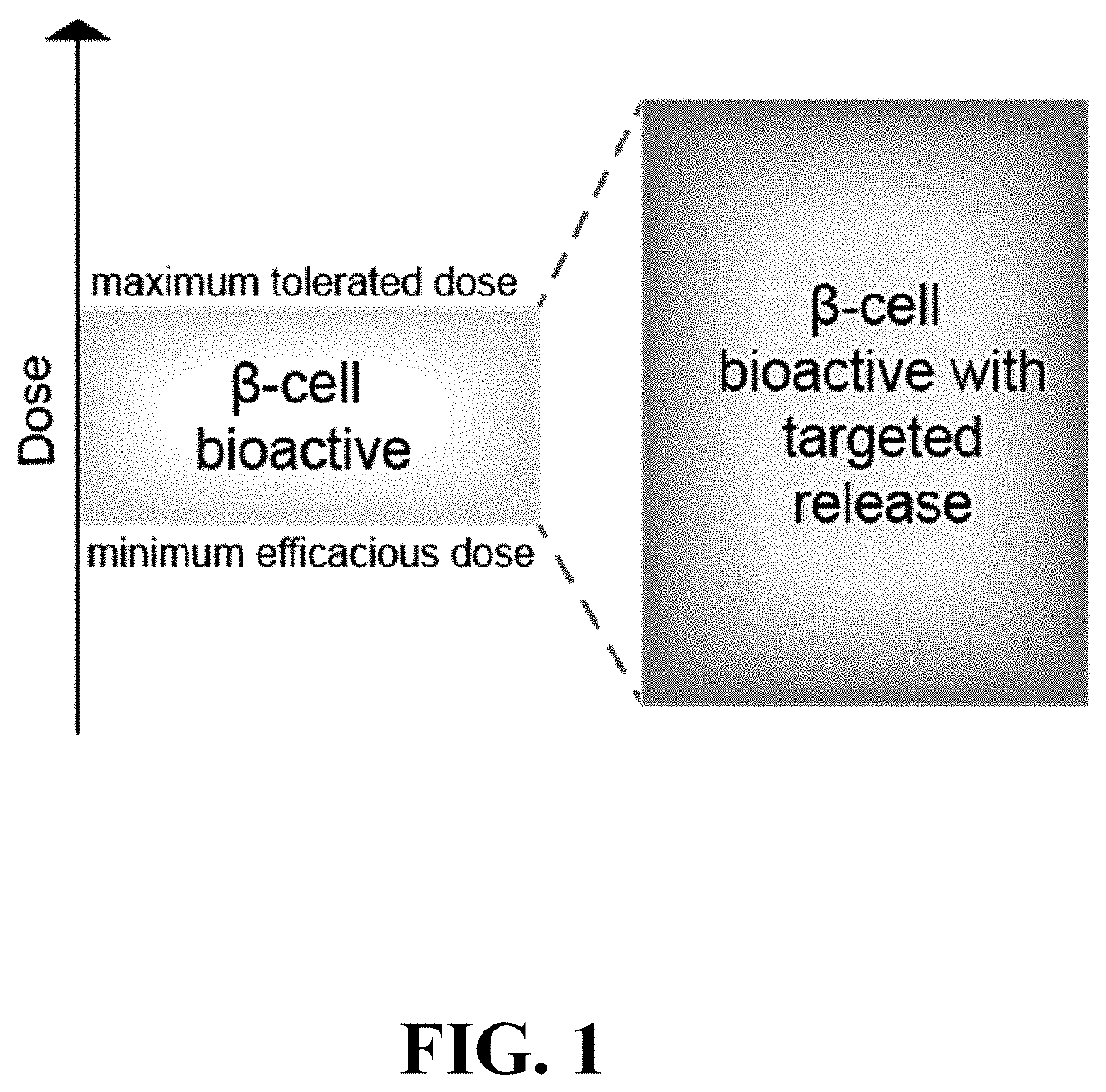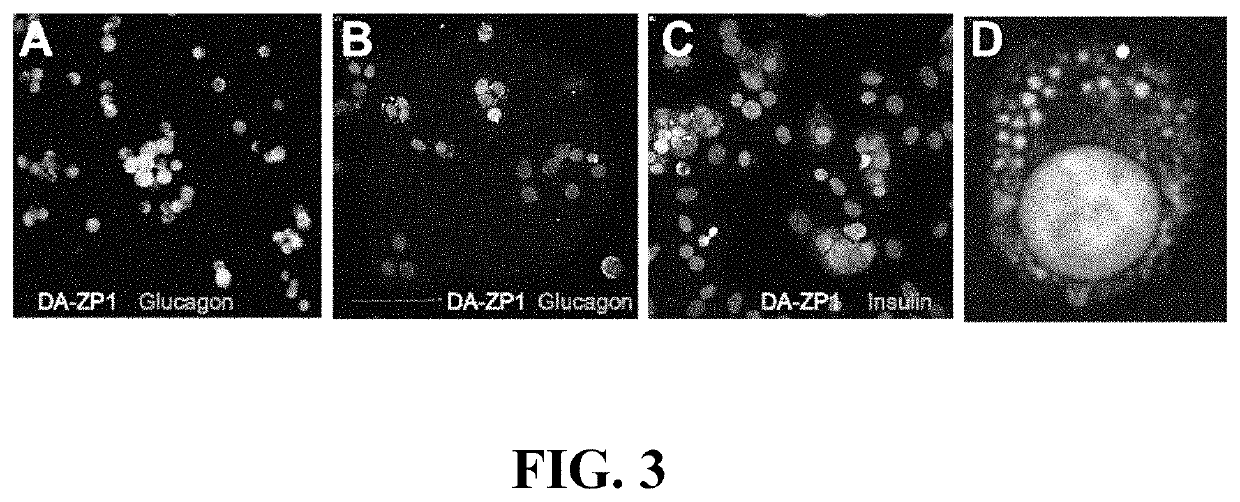Targeted delivery to beta cells
- Summary
- Abstract
- Description
- Claims
- Application Information
AI Technical Summary
Benefits of technology
Problems solved by technology
Method used
Image
Examples
example 1
the Scaffold and Ligand End of ZnPDs
[0562]Zn2+ is redox inactive, but is a powerful Lewis acid. Reaction-based probes were developed to image Zn2+ in tissue. [28,29] In these reaction-based probes, Zn2+ activates the fluorescence of a caged probe by catalyzing the removal of the acetyl groups from the molecule (in red in FIG. 2A). Further, the Zn2+ specificity of this reaction over those of other metal ions, including Fe2+, Cu2+, Mn2+, Co2+, and Ni2+, is high.
[0563]To demonstrate that high intracellular Zn2+ concentration can indeed be used to selectively release cargo in β-cells, the reaction-based probe was incubated in a β-cell line (INS-1E), an alpha cell line (αTC1.6), an acinar cell line (PANC1), and cells of other lineages (FIG. 2B). It was found that β-cells were highly fluorescent compared to other cell types, which yielded minimal background fluorescence (FIG. 2C).
[0564]Next, this probe was incubated in dissociated rat or human islets, co-staining for insulin to identify β...
example 2
and Biochemical Studies on ZnPDs, Using a Fluorophore as Cargo and Ligands with Varying Zn2+ Affinity
[0567]The reaction-based probe scaffold was designed as a cargo release scaffold (FIG. 5A) which uses, as cargo, a pro-fluorophore (FIG. 5B) that is activated upon zinc-catalyzed release from the scaffold to give a strongly fluorescent molecule. β cell-selective release of the active agent is via β-cell-selective cleavage of the scissile bond (FIG. 5A, shown in red). Without being bound by theory, is it believed that such selectivity is obtained due to the ability to fine-tune the chemical stability of the scissile bond on the cargo release scaffold. The first control site is a Zn2+ chelating ligand (FIG. 5A, shown in blue). A high-affinity Zn2+ chelating ligand facilitates cargo release, but may induce a premature release of the cargo at sites with low Zn2+ concentration. High-affinity ligands can also deplete Zn2+ and may be toxic. On the other hand, a very low-affinity Zn2+ chelat...
example 3
Fluorophore-Bearing ZnPDs with Maximum Specificity for β-Cells and Test Fluorophore-Release ZnPDs on Human Islets
[0570]Over 30 cell lines of various lineages (including those described in FIG. 2B) have been identified and are available through the Cell Line Factory at the Broad Institute. As was done for the reaction-based probe, DA-ZP1 (FIG. 2B, C), fluorescence of the probes synthesized according to the present invention will be quantified in these cells using high-throughput fluorescence assay which is currently run in a 96-well format, an automated high-content imaging microscope and an automated image analysis system.
[0571]The fluorophore-bearing ZnPDs according to the present invention is assessed in human islets using high-content imaging. After dissociation of the islet cells with Accutase, cells are seeded on 96-well plates coated with an extracellular matrix derived from the HTB9 bladder carcinoma cell line. [31,32] Cells are then treated for 30 minutes with various concen...
PUM
| Property | Measurement | Unit |
|---|---|---|
| Concentration | aaaaa | aaaaa |
| Therapeutic | aaaaa | aaaaa |
| Fluorescence | aaaaa | aaaaa |
Abstract
Description
Claims
Application Information
 Login to View More
Login to View More - R&D
- Intellectual Property
- Life Sciences
- Materials
- Tech Scout
- Unparalleled Data Quality
- Higher Quality Content
- 60% Fewer Hallucinations
Browse by: Latest US Patents, China's latest patents, Technical Efficacy Thesaurus, Application Domain, Technology Topic, Popular Technical Reports.
© 2025 PatSnap. All rights reserved.Legal|Privacy policy|Modern Slavery Act Transparency Statement|Sitemap|About US| Contact US: help@patsnap.com



